Post by Aaron McCormack
I love these power pedals. But I am really a bit pissed off too. Why?
It has been years in the making, but Garmin have finally released their long-awaited Vector pedal system – pedals that have built-in power measurement. Why is this a big deal? Well, current options based on rear hubs (CycleOps) and crank arms (Quarq) are hard to move when you swap wheels or bikes.
Of course you can always buy two or more of them. But with hubs starting at $700 and cranks at $1400, this is an expensive proposition. Recently another product called Stages has come on the market. It is a power measurement system that uses the left crank only. It retails for less than $1000 and does give folks the option to move between bikes if they have a consistent set of cranksets across their range. It also solves the problem of swapping out wheels. You can read a rave review here, and a not-so-positive review here.
Like a lot of cycling purchases, a decision on a power system depends on three things:
1. What do you have already that the purchase needs to work with? (Cycle computer, bike components, number of bikes, etc.)
2. What do you want to use the system for? (Simple personal progression = less accuracy, full-on training by power zones = more accuracy)
3. How much do you have to spend on making (1) and (2) happen….?
I have two road bikes. One metal Specialized Allez Pro and one lovely new carbon Specialized Tarmac Pro. I have one CX bike (Specialized Crux) but I have decided that I am not interested (for now) in measuring my CX rides beyond stuffing my Garmin in my back pocket to get GPS and heartrate (I want to be sure I am making the max possible effort for the 45 to 60mins of a CX race, so the HR is useful).
Last year I made the switch away from proprietary POLAR monitoring/computer to a nice affordable Garmin500, which I use across the bikes, and when I have a rental whilst traveling.
To equip all my rear wheels with power tabs, or both racing/training bikes with crank-based systems, would cost me over $3000. So this was too big an investment. Nor would that approach work when I rent bikes whilst traveling for work or pleasure (so far this year I have rented and trained in Ft Lauderdale, Ireland, Albuquerque and Denver).
When Garmin announced Vector was finally coming out at $1699, that the pedals would be Look-compatible (my favorite), and that the pedal system could be easily moved between bicycles I though it was time to commit. This would enable me to simply move the pedals between bikes, including taking them on trips.
Before we move on, a word on why to train with power. Luke Fortini and I covered this in an event we held at the shop earlier this year when we talked about things like Strava, Garmin, Cateye, and Polar, as well as training based on perceived exertion, heart rate and power.
You can just get on your bike and ride it. Most of us started off this way and for many folk that is all it is about. If you are in that category we said a simple cycle computer or a smartphone App (Strava) is all you need. Even if you do race, you can just “have at it”. It didn’t seem to do Tommy Voeckler any harm. However, I wonder how much better he may have been if he used power to train.
- Thomas Voeckler gives his thoughts on measuring heart rate and training with power meters
But if you have the money and love the gadgets and the numbers and the analysis then you can have a lot of fun with power systems even if you never race.
If you are racing competitively (bike races or tri) or if you are setting a serious goal for distance/time in a big ride then training with power is supposed to make a big difference versus perceived effort or using HR zones. This past year I watched my brother, aged 40, use power-based training to go from Cat3 to Cat1 in a few short months, culminating in becoming a “man of the Ras”in the Tour of Ireland, a UCI2.1 event (like the Tour of Utah).
- A feeling common to a lot of McCormacks – Paul, Alan, Mark, Frankie, Cameron, Brendan, brother Gareth (above) – but not me…
So I am sold on power-based training. After 2 years using HR or PE, in which I have worked hard, I will be interested to see if it causes a step change in performance. Frankly, I also hope that the new data, and acting upon it, will give extra motivation to do the workouts (rather than just “riding the bike”) – especially in the basement this winter.
Back to Day 1 of the Garmin pedals….first of all I went to visit my usual dealer for all things addictive…
- Jim peddling his new pedals (geddit?)
The night before going to the Lodge to collect and install and play with the pedals, I read some cautionary posts on the internet about compatibility of the pedal system with “some” Specialized FACT cranks. Certain articles said all of them….some of them just specified “S-Works”.
The new Garmin Vector pedals don’t fit the cranks on my new pride-and-joy carbon bike with its lovely (but ultra-wide and ultra-deep) FACT carbon cranks. The Garmin pedals work by measuring force applied in the pedal spindle. The data is transmitted to your computer using a pedal pod where the battery and electronics are. This pod connects around the crank from the pedal side to the opposite side, where it plugs into the pedal spindle. That attachment will not fit if your cranks are more than 15mm in width and 38mm in height.
- The pedal pod.
This is, as the young folks would say, a major bummer.
It seems an easy problem to fix. The pedal pods are to be available as a single accessory (price $89 I believe) and there is word that Garmin will release a new pod “at some time in the future” that will fit FACT cranks. I have to believe that Specialized FACT and other “oversize” carbon cranks are a large enough part of the market that this will be worth it for them. And since many of you dear readers are, like me, freshly equipped with new Specialized loveliness, you should lean on the Garmin folks too. Tweet them, email them (social.support@garmin.com) and put product suggestions on their website page. Tell them you are not going to buy their wonderful system until and unless they have a solution for Specialized FACT (“and thanks” as they say on NPR).
OK, so it was time for planB. Time to put the pedals on my second bike.
Installation is dead easy – but there is one thing that I would recommend and it involves another purchase.
With most power systems, calibration is very important. And, with cranks and these pedals in particular, tightening things to the correct torque is vital. Undertighten, and you will get duff readings. Overtighten and you may well break something.
Since the normal hex-wrench hole for Look pedals is now full of electronica, the pedals are tightened with a go0d-ole-fashioned pedal spanner. However, the Garmin folks are particular about tightening to a specific torque. Now our good friend Jim is very disciplined about torque. You will always see him work headsets and seatposts and the like with the torque wrench. The rest of us, maybe not so much.
So whilst “tightening as tight as feels reasonable, but not using your full force” may feel like a simple guideline, I don’t feel it is a good one in this case. Spending $1699 on a power system that will govern every aspect of my training going forward, and skipping the $75 investment in an appropriate torque-wrench and “Crow-foot” seems a little silly. In particular because I know that I will be moving the pedals reasonably frequently. (Yes I am actually buying a new crankset for the carbon bike so that I can use the pedals – hilarious, eh?) Please note that the Crow-Foot that we link to above is the only one that the folks out there on the internet have found to actually be thin enough to fit.
So the torque wrench and crow-foot are ordered (we will have one at the shop too – the torque range is beyond what is needed for any other cycle component right now so it has to be ordered for the shop as well).
Right now the pedals have been tightened “by feel”. I had a go at basic calibration but was unsure if I had done it correctly.
Yesterday was the inaugural ride. The Garmin500 (updated with new firmware) found the power unit. I “zero-calibrated” it. Did a little routine involving back-pedaling eight times to further calibrate. And off I jolly-well rode.
And so I entered the fascinating world of “training with power”. I will write more about this all goes in the next post. But for now, I offer you this graph of Left-Right balance of my power output…
- Oh dear!
Either my left leg has gone to sleep. Or I have a calibration issue.
Ask anyone who has a power system and they will tell you it takes a few rides to get everything bedded-in. I guess these are no different.
In the meantime, if you want a proper product review, you should read this excellent post by DC RAINMAKER right here.
Part 2 of this review is now online here.

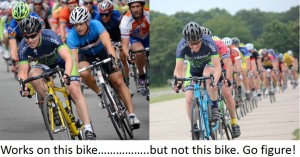
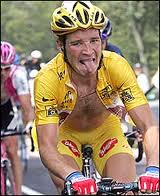

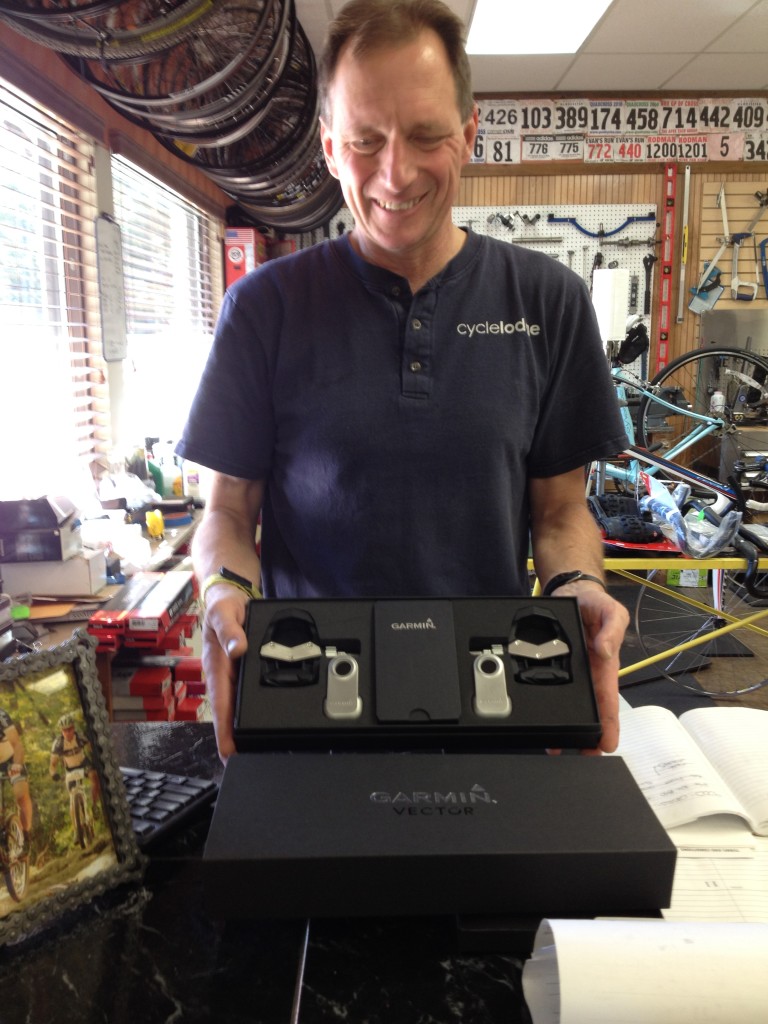
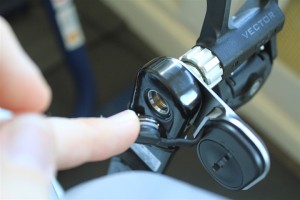
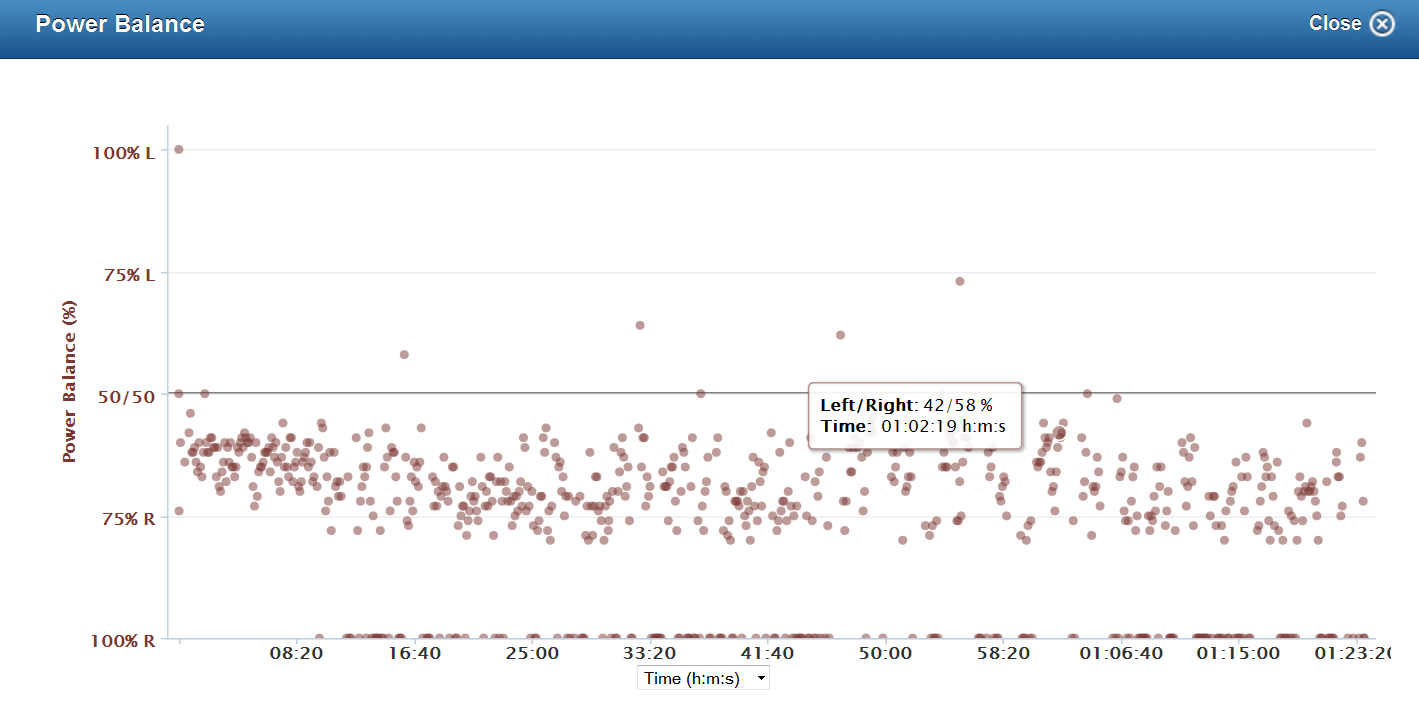

I have noticed you don’t monetize your page, don’t
waste your traffic, you can earn extra cash every month because
you’ve got high quality content. If you want to know how to make
extra bucks, search for: Mertiso’s tips best adsense alternative